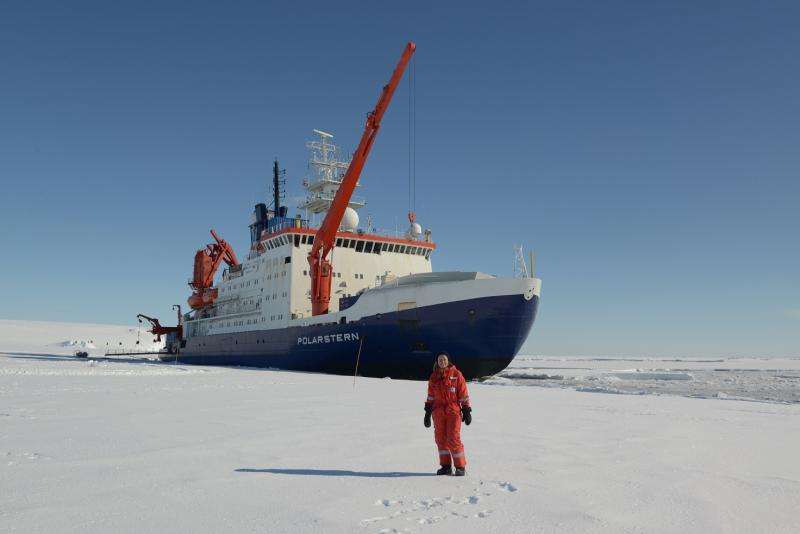Mathematical model calculates the collapse of shelf ice

Antarctic shelf ice consists of giant floating ice sheets that can span thousands of square kilometres. Pieces break off at their edges, forming icebergs in the ocean. In order to more effectively predict these break-offs, a process known as calving, Julia Christmann from the University of Kaiserslautern (TU) has developed mathematical models in cooperation with the Alfred Wegener Institute, Helmholtz Centre for Polar and Marine Research (AWI). On the basis of physical factors, these models can be used to predict when and where the ice may collapse. This is important, particularly for research teams situated on the ice shelf.
The ice rises up like a sheer cliff face—shelf ice is not only several thousand square kilometres large, it is also more than a hundred metres high in many places. From time to time, pieces break off the edge and crash into the sea below, where they float away into the ocean as icebergs. This recently occurred with the Larsen C ice shelf.
Science is unable to accurately predict when and where the ice shelf will break. "Assumptions were always previously based on observations by glaciologists and other researchers. Concrete calculations with physical parameters did not exist," says Julia Christmann, who is researching technical mechanics at the University of Kaiserslautern with Professor Dr Ralf Müller. As a rule of thumb, she explains, the ice tends to break where it is thinner than 200 metres; in reality, however, there are also many ice shelves that are even thinner.
The calving of ice sheets is a continuous process that is influenced by a number of factors. Satellite data was also used in order to observe this natural spectacle. "However, [satellites] only offer snapshots of the process," Christmann adds. As part of her doctoral research, she has developed mathematical models to calculate when and where the ice shelf may collapse. A range of physical factors are germane, here. "The thickness and density of ice can play an important role, for example," Christmann continues. "The material parameters are also critical, including elastic factors. These mainly influence where the iceberg is calved. There is also the viscosity, which affects the time between break-off events."
Christmann was supported in her work by Professor Dr Angelika Humbert from the AWI. Humbert is an expert in the field of glaciology. She is also occupied with the properties and motion of giant ice sheets on the Antarctic continent, which constitute 70 percent of the entire supply of freshwater on the planet.
"The ice shelf generally breaks at points that are between a half and full thickness of the ice sheet from the edge," says Christmann. This data may be particularly important for the scientific community, since numerous research stations are located on ice shelves in Antarctica. This includes the German Neumayer Station III or the British station, Halley VI, which was closed for winter this year due to a crack in the ice.
Christmann recently completed her doctoral thesis. She is continuing her research on the properties of ice. She is now focusing on grounding lines in Greenland. This refers to the area in which the ice still touches the ground and merges into floating shelf ice. The researcher intends to find out how these lines change over the course of time.
Provided by Technische Universität Kaiserslautern




















